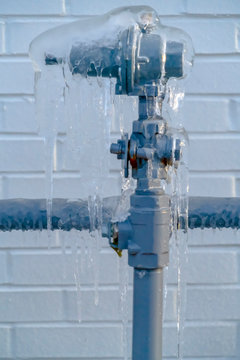Important Tips to Avoid Frozen Pipes in Cold Weather: Professional Insights
Important Tips to Avoid Frozen Pipes in Cold Weather: Professional Insights
Blog Article
We have stumbled on the article involving Preventing and dealing with frozen pipes listed below on the net and figured it made good sense to write about it with you on this page.

Winter can wreak havoc on your plumbing, specifically by freezing pipes. Below's how to avoid it from taking place and what to do if it does.
Intro
As temperature levels decline, the risk of frozen pipelines boosts, potentially causing expensive fixings and water damages. Recognizing how to prevent icy pipes is essential for house owners in cool climates.
Recognizing Icy Pipes
What creates pipelines to freeze?
Pipes freeze when revealed to temperature levels below 32 ° F (0 ° C) for prolonged periods. As water inside the pipelines ices up, it broadens, taxing the pipeline walls and potentially creating them to break.
Dangers and damages
Frozen pipelines can cause water system disturbances, residential or commercial property damage, and costly repair services. Ruptured pipelines can flood homes and cause extensive architectural damage.
Indicators of Frozen Water Lines
Determining frozen pipelines early can avoid them from rupturing.
How to identify icy pipelines
Search for lowered water flow from taps, unusual smells or noises from pipelines, and visible frost on revealed pipelines.
Avoidance Tips
Protecting at risk pipes
Cover pipelines in insulation sleeves or make use of heat tape to safeguard them from freezing temperature levels. Concentrate on pipelines in unheated or exterior areas of the home.
Heating techniques
Keep interior spaces effectively warmed, specifically areas with plumbing. Open cupboard doors to permit cozy air to flow around pipelines under sinks.
Securing Exterior Plumbing
Garden hose pipes and outside faucets
Separate and drain pipes yard hose pipes prior to winter months. Set up frost-proof faucets or cover outside faucets with protected caps.
What to Do If Your Pipes Freeze
Immediate activities to take
If you presume icy pipes, keep faucets available to soothe stress as the ice melts. Utilize a hairdryer or towels soaked in warm water to thaw pipelines slowly.
Long-Term Solutions
Structural changes
Take into consideration rerouting pipelines away from outside walls or unheated locations. Add extra insulation to attic rooms, basements, and crawl spaces.
Updating insulation
Purchase top quality insulation for pipelines, attics, and wall surfaces. Proper insulation assists maintain constant temperature levels and decreases the danger of icy pipes.
Verdict
Avoiding frozen pipes requires aggressive actions and fast responses. By understanding the reasons, indications, and preventive measures, homeowners can shield their pipes throughout winter.
6 Proven Ways to Prevent Frozen Pipes and Protect Your Home
Disconnect and Drain Garden Hoses
Before winter arrives, start by disconnecting your garden hoses and draining any remaining water. Close the shut-off valves that supply outdoor hose bibs and leave the outdoor faucet open to allow any residual water to drain. For extra protection, consider using faucet covers throughout the colder months. It’s also important to drain water from any sprinkler supply lines following the manufacturer’s directions.
Insulate Exposed Pipes
Insulating your pipes is an effective way to prevent freezing. Pipe insulation is readily available at home improvement stores and is relatively inexpensive. Pay close attention to pipes in unheated areas such as the attic, basement, crawl spaces, or garage. Apply foam insulation generously to create a buffer against the cold. You can also wrap your pipes in heat tape or thermostat-controlled heat cables for added warmth.
Seal Air Leaks
Inspect your home for any cracks or openings that could let in cold air. Seal any holes around the piping in interior or exterior walls, as well as the sill plates where your home rests on its foundation. Additionally, make sure to keep your garage door closed unless you’re entering or exiting. Leaving it open creates a significant air leak that can lead to frozen pipes.
Allow Warm Air Circulation
During cold snaps, it’s essential to allow warm air to circulate evenly throughout your home. Leave interior doors ajar to promote better airflow. Open kitchen and bathroom cabinets to help distribute heat consistently around the rooms. If you have small children or pets, be sure to remove any household chemicals or potentially harmful cleaners from open cabinets for safety.
Let Faucets Drip
A small trickle of water can make a big difference in preventing ice formation inside your pipes. When temperatures drop significantly, start a drip of water from all faucets served by exposed pipes. This continuous flow helps prevent the water from freezing. Additionally, running a few faucets slightly can relieve pressure inside the pipes, reducing the chances of a rupture if the water inside does freeze.
https://choateshvac.com/6-proven-ways-to-prevent-frozen-pipes-and-protect-your-home/

I was guided to that editorial about How to prepare your home plumbing for winter weather through someone on another web property. Loved our blog entry? Please quickly share it. Help others discover it. Thanks for your time. Don't forget to check up our website back soon.
Book Services Report this page